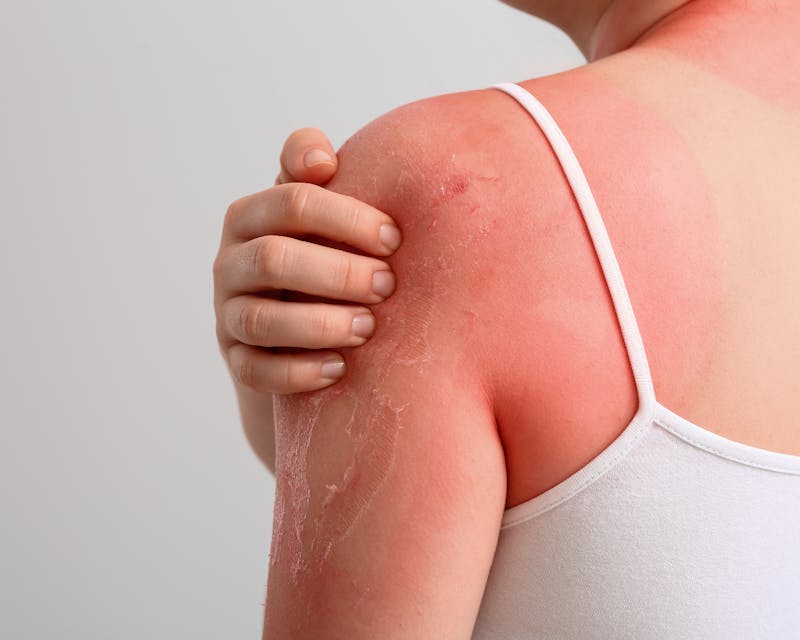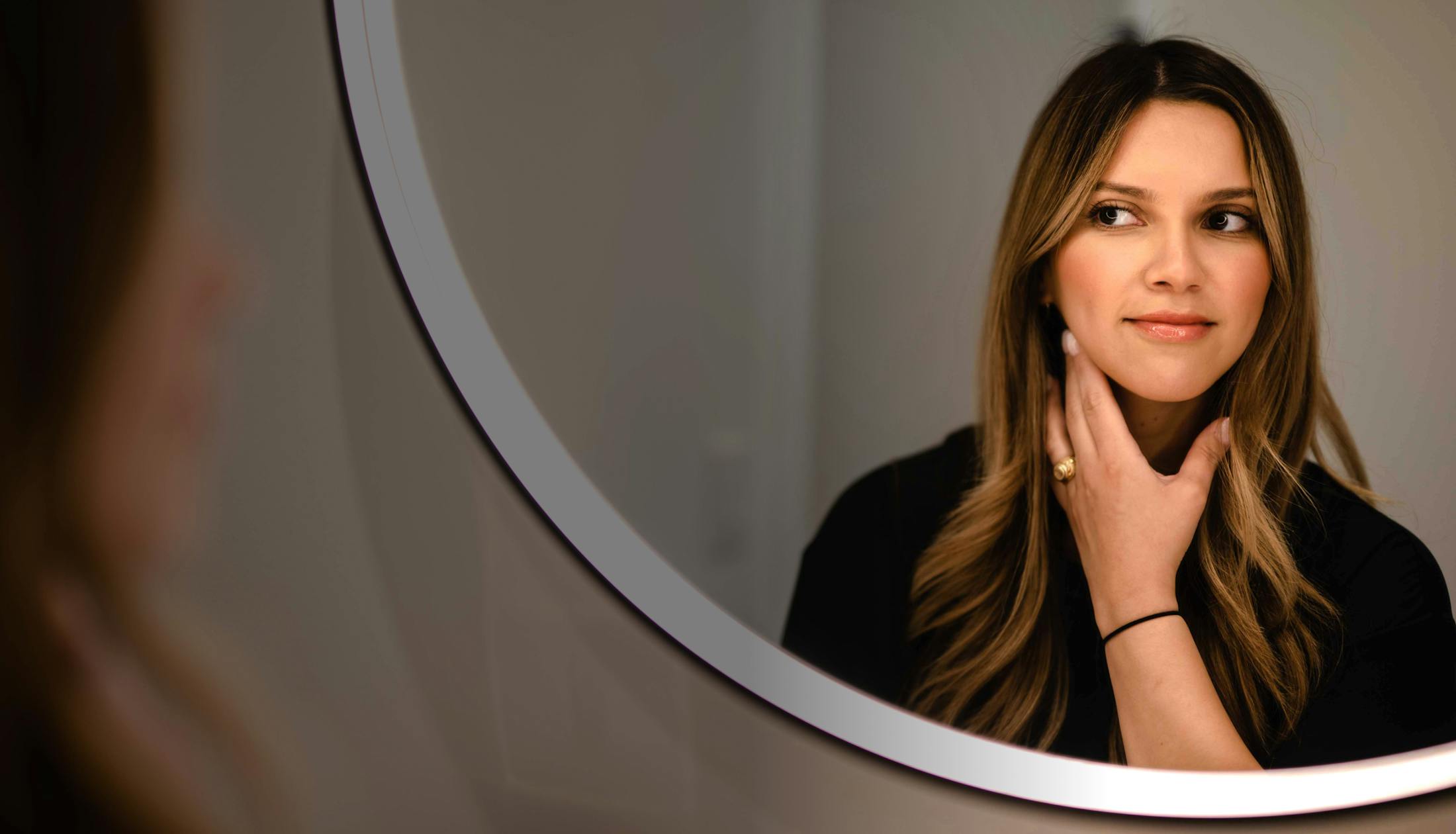
After a fun day in the sun, the aftermath of sunburn can be uncomfortable and frustrating. Redness, peeling, and damage to the skin’s surface are common consequences of overexposure to UV rays. While it's always important to prevent sunburn, sometimes it's inevitable. Fortunately, there are effective treatments and skincare solutions to repair post-sunburn skin, soothe irritation, and minimize long-term damage. In this blog post, we'll explore the best ways to heal sunburned skin and restore its natural balance and health.
Why Sunburn Happens
Sunburn occurs when the skin is exposed to ultraviolet (UV) rays for an extended period of time. UV rays damage the skin cells, triggering an inflammatory response that leads to redness, pain, and swelling. The skin may even peel as it heals, which is a natural part of the body’s attempt to shed damaged cells.
Sunburn not only causes immediate discomfort but can also have long-term effects on skin health, including premature aging and an increased risk of skin cancer. While prevention with sunscreen and protective clothing is key, knowing how to repair and care for your skin after a sunburn is equally important.
Best Treatments for After Sunburns
1. Hydrate with Aloe Vera and Soothing Moisturizers
One of the first steps to healing sunburned skin is to replenish the moisture that the skin has lost due to overexposure. Aloe vera gel is a well-known natural remedy for soothing sunburned skin. It provides cooling relief, reduces inflammation, and helps hydrate the skin. Look for aloe vera products that are free from alcohol and fragrance to avoid further irritation.
In addition to aloe, opt for rich, hydrating moisturizers that contain ingredients like hyaluronic acid and ceramides. These ingredients help lock in moisture and restore the skin’s natural barrier, which may be compromised after a sunburn.
Our Team Recommends:
- SkinBetter Science Trio Rebalancing Moisture Treatment
- ALASTIN Skincare Soothe and Protect Recovery Balm
- ALASTIN Skincare Ultra Nourishing Moisturizer with TriHex Technology®
- EltaMD Skin Restore Body Moisturizing Creme
Regular moisturizing can also help prevent peeling by keeping the skin supple and hydrated.
2. Topical Treatments for Redness and Inflammation
Redness and inflammation are common after sun exposure, and using anti-inflammatory treatments can help calm the skin. Look for products containing niacinamide, a powerful anti-inflammatory ingredient that reduces redness and irritation. Niacinamide also helps repair the skin’s barrier, which is essential for recovery.
Our Team Recommends:
Another great option to help soothe mild to moderate sunburns is hydrocortisone cream, which can be applied in small amounts to reduce swelling and redness. However, be cautious with long-term use of hydrocortisone, as it can thin the skin over time. Always consult a doctor for advice if you are unsure how to use this treatment.
3. Hydration from Within
Drinking plenty of water after a sunburn is crucial to rehydrate your skin from the inside out. Sunburn dehydrates the body, so drinking water helps restore moisture levels and promotes faster healing. Consider drinking water-rich foods like cucumbers, watermelon, and oranges to further boost hydration.
For an added benefit, consider electrolyte-infused drinks that can help replace essential minerals lost from sun exposure and dehydration.
4. Gentle Exfoliation for Peeling Skin
As sunburned skin heals, it may begin to peel as it sheds damaged cells. While it’s important to let the skin naturally exfoliate, gentle exfoliation can help speed up the process and prevent excessive peeling. Avoid using harsh scrubs, which can irritate sensitive skin, and opt for a mild exfoliating acid like lactic acid or glycolic acid. These acids help remove dead skin cells without causing further damage.
Our Team Recommends:
If you're dealing with severe peeling, be patient and allow your skin to shed naturally. Don’t pick at peeling skin, as this can lead to scarring and further irritation.
5. Sunburn Repair with Post-Sun Care Masks and Treatments
For extra relief and to speed up the healing process, consider using post-sun care masks or sheet masks formulated with ingredients like aloe vera, chamomile, and cucumber. These ingredients calm irritation, reduce redness, and hydrate the skin. A calming mask can be used as a weekly treatment while your skin heals.
Additionally, exosome therapy and growth factor serums can promote skin regeneration and accelerate healing. These treatments help stimulate collagen production and enhance the repair of damaged skin cells, reducing the appearance of sunburned skin and promoting smoother, healthier skin overall.
6. Advanced Treatments: Laser and PRP for Sun Damage
If your sunburn has caused more serious damage, such as hyperpigmentation or deeper wrinkles, there are advanced treatments that can help. Laser treatments, such as BBL (Broadband Light) or Moxi, can target sunspots and uneven skin tone. These lasers work by penetrating the skin to stimulate collagen production and reduce pigmentation, resulting in clearer, smoother skin over time.
For those looking to repair more advanced damage, PRF (Platelet-Rich Fibrin) therapy is another option. PRF uses your body's own plasma to stimulate collagen production, accelerate healing, and improve skin texture. It’s especially beneficial for repairing sun-damaged skin and reducing the appearance of wrinkles caused by UV exposure.
Sun Protection is the Best Sunburn Prevention
The most effective way to avoid the painful and damaging effects of sunburn is by practicing sun safety every day. While treatments can repair sunburned skin, prevention is always better than dealing with the aftermath. Here are a few essential tips for sun protection:
- Apply Broad-Spectrum Sunscreen: Always use a broad-spectrum sunscreen with at least SPF 30 or higher. Apply it 30 minutes before going outdoors and reapply every two hours, especially after swimming or sweating.
- Seek Shade: Avoid direct sun exposure, especially between the hours of 10 a.m. and 4 p.m. when the sun’s rays are the strongest.
- Wear Protective Clothing: Wear hats, sunglasses, and long-sleeved clothing to shield your skin from harmful UV rays.
- Avoid Tanning Beds: Tanning beds emit harmful UVA and UVB rays that can cause premature aging, sunburn, and increase the risk of skin cancer.
Being sun-safe and protecting your skin from UV damage is the best way to keep your skin healthy, youthful, and free from sunburns in the future. Shop our favorite sunscreens here.
Conclusion
Sunburn is a common and painful consequence of overexposure to the sun, but with the right treatment, your skin can recover quickly and effectively. Hydrating, soothing inflammation, gentle exfoliation, and advanced therapies are all essential steps in repairing sunburned skin.
By incorporating these treatments and taking proper precautions, you can reduce redness, prevent peeling, and restore your skin’s health. For more advanced care or to address lingering sun damage, consider professional treatments like laser therapy or PRP to rejuvenate your skin and restore its natural glow.
Need help repairing your post-sunburn skin? Book a consultation at The Piazza Center to learn more about the best treatments for your skin’s needs.


